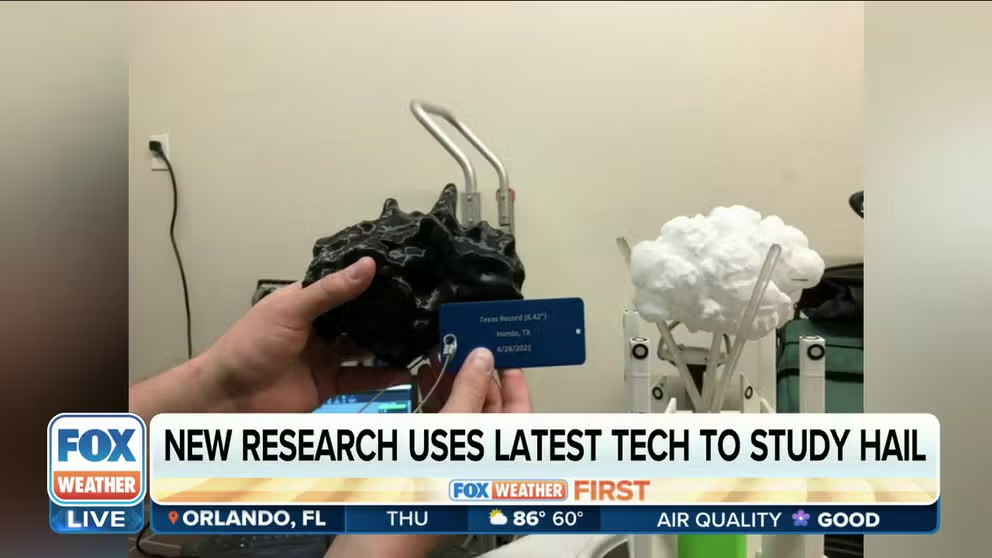Talking to the animals? With AI tech, it may be a possibility
The ultimate goal of the Earth Species Project (ESP) is to communicate with animals, but along the way, several smaller steps could change what we know about the animal kingdom.
Could AI allow us to talk with animals?
It's been more than 100 years since Doctor Doolittle first appeared in print, but the dream of speaking with animals is no less magical—the only difference now is that it may not be so fantastical anymore.
WASHINGTON – It’s been more than 100 years since Doctor Dolittle first appeared in print, but the dream of speaking with animals is no less magical – the only difference is, it may not be so fantastical anymore.
The ultimate goal of the Earth Species Project (ESP) is to communicate with animals, but along the way, several smaller steps could change what we know about the animal kingdom. In a nutshell, the group is trying to decode animal communication through the use of artificial intelligence (AI).
Scientists have been collecting sounds, calls, chirps and various animal vocalizations for decades. Animals, like humans, have a wide range of vocalizations. The hope is that AI models being developed by ESP can work like ChatGPT or Dall-E does for human input, and turn those vocalizations into something more recognizable to humans.
"We’re in the midst of a computation revolution," said Gabriel A. Miller, the tech director of the Paul G. Allen Foundation. "ESP will electrify the conservation community with curated data sets, benchmarks, and AI tools that lead to better understanding of animal behavior and communication."
Miller is the technical director for the Paul G. Allen Family Foundation, a group that recently offered $1.2 million in funding to support these all-new efforts.
"It goes beyond pure, simple conservation," said Miller. "It’s not just about getting information and protecting animals. That’s there, and it’s really important, but there’s this step of connecting emotionally."
PEANUT, THE WORLD'S OLDEST CHICKEN, DIES AT 21 IN MICHIGAN OWNER'S ARMS
Using technology to prepare for more heavy rain events
A new Dartmouth study predicts an increase in heavy rainfall events like the one this weekend in the Northeast. As the region braces for more rain, Metomatics North America CEO Palsh Walsh joins FOX Weather to talk about how advanced forecasting can help people prepare.
Miller described the possibilities in a form that Pacific Northwest residents may understand: the endangered Southern Resident killer whale.
We know the species is in a dire position due to a lack of food, pollution and noise that makes it harder for the orcas to hunt. He hypothesized a future where we could send some sort of a signal to let them know when a noisy ship was about to go through their hunting grounds or warn of a vessel that could be spilling fuel into the water.
Frankly, the idea may seem too incredible to wrap our heads around, but the times we face may call for such a strategy. Climate change has sped up a biodiversity crisis that threatens several species around the globe. Understanding animals would make it easier to understand their needs, but it would also connect humans to nature in a way that could spur the type of drastic changes needed to protect wildlife.
As ESP explains online, the machine learning they’re attempting to perfect is already being done with human language. A number of projects are already in the works that create vocalizations, track the vocal repertoire of animals in the wild and differentiate one animal from another in scenarios where multiple animals are vocalizing.
SEE FUNNIEST WILDLIFE PHOTOS OF 2023: AIR GUITAR 'ROO AND FEUDING FINCHES TAKE TOP HONORS
New research uses latest technology to study hail damage
Dr. Ian Giammanco, Lead Research Meteorologist at the IBHS Research Center, joined FOX Weather to speak on his studies on hail damage, the technology behind measuring hail and the impacts strong storms have.
Beyond vocalization, there are also efforts to better understand behaviors, as well. Those tied to the projects said what was science fiction three to four years ago, is suddenly in the realm of possibility.
"It’s been exciting over the past year to see the growing interest in the ability of AI research to unlock a more profound understanding of animal communication and help solve long-standing challenges in conservation biology," said Katie Zacarian, ESP CEO.


